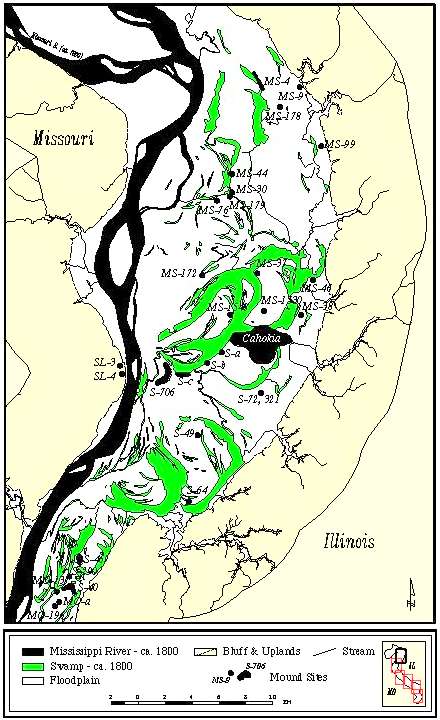
Late Prehistoric sites with mounds and ca. 1800 locations of the Mississippi River and
wetlands.
|
These maps and other geological data clearly show that the river position has
been relatively stable in the American Bottom for the last several hundred
years. Thus, the record of Mississippian archaeological sites in the American
Bottom has not been biased by destruction of sites by shifting channel
locations. Moreover, these historical data demonstrate that prior to the late
19th to early 20th century wetlands and swamps were major physiographic
features, spread out across much of the American Bottom. For the entire
central Mississippi River valley (from Grafton to Thebes Gap) the PLS data
indicate that rivers, wetlands, swamps, lakes and sloughs covered on the order
of about 35% of the valley. Excluding the Mississippi River and islands, about
19% of the valley floor was water covered. In some places over 50% of the
floodplain area was underwater for a good part of most years. For the area
surrounding Cahokia, over 15% of the valley floor was permanently underwater.
These are highly conservative estimates of water covered ground because, for
example, early surveyors tended to slog through most shallow water areas and
typically mapped only the deepest water bodies.
|
